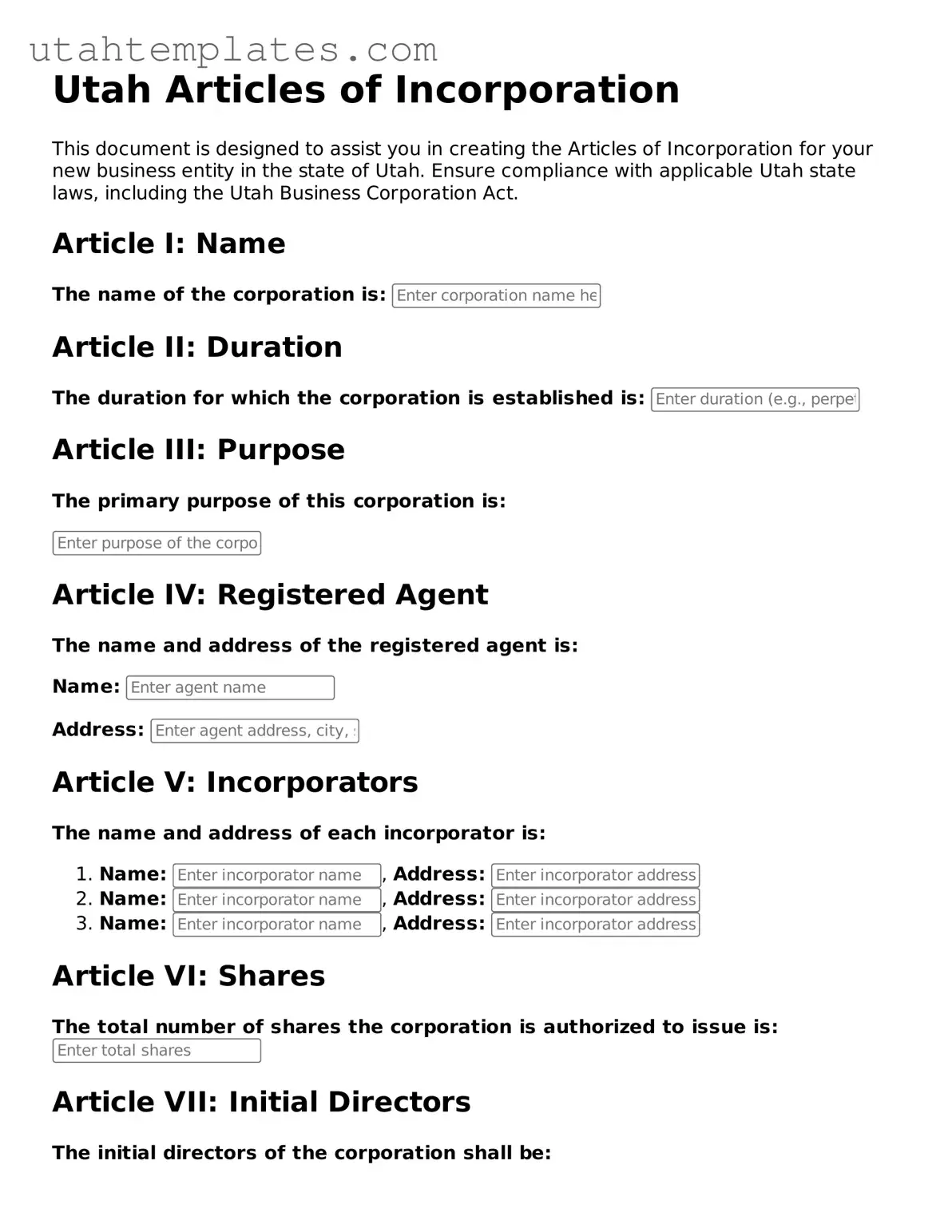Free Articles of Incorporation Form for Utah
The Utah Articles of Incorporation form is a legal document required to establish a corporation in the state of Utah. This form outlines essential information about the corporation, including its name, purpose, and structure. Completing this form is a crucial step in the incorporation process, allowing businesses to operate legally in Utah.
Launch Articles of Incorporation Editor Here
